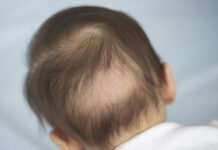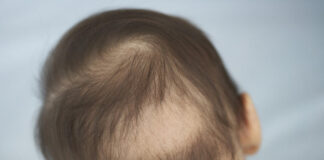When the baby is born, we start measuring their development through milestones like at one month the baby lifts his head or whether he sees towards the light, or at six months, the baby should start sitting. These milestones are used as the scale of measuring development, but many more milestones need to be capture on camera. The common milestone you heard about are sitting, walking, rolling, talking, and crawling. Every baby’s growth is different from one another, so don’t compare your child. There might be a delay in achieving milestones If your baby is premature.
Here are some of the baby development milestones you might end up ignoring due to your hectic parenting routine:
Milestones #1: See in 3D
You often listen when a baby is born; he cannot see the distant objects. He can only focus on the thing that is 8 to 10 inches away. He can see only black and white colors. At one month baby starts witnessing the intensity and brightness of the color. Have you ever heard that at birth, the baby can view only in two dimensions? Yes, a baby can indeed see in two dimensions at birth. Between two to three months, the part of the brain called the cerebral cortex had developed enough to combine the images of the two eyes in three dimensions. At three months, your baby starts to see some primary colors, including red. At four months, the baby’s vision is developing, and now he can see different colors.
Milestones #2: First laugh
Another baby development milestone is when babies start smiling at around six to twelve weeks. However, you may notice the smile of the baby before six weeks. Some people see a baby smile right after birth, but this is not the smile; it is a reflex smile. Usually, babies doing reflex smiles before or during labor and continue doing It after birth. Laughing is a lovely milestone, which means that the baby wants to communicate with you. Around three to four months, usually baby starts laughing aloud. This cute little laughter stole your heart. Laughing is the sign that your baby is alert, happy, and needs your attention. Her laughing sense is due to the development of the cerebral cortex (the part of the brain). You can also encourage the baby to laugh by making funny noises or light tickling or playing games like peekaboo, etc.
Milestones #3: Shifting Things from one Hand to Another.
Almost every parent notices the first grasps of the baby because it happened so unexpectedly. But what most parents missing is that how the baby shifts an object from one hand to another. After grasping baby starts knowing how to manipulate things. Shifting is the indicator of gross motor skills and also another significant baby development milestone.
Milestones #4:Baby know his Name
One of the first thing parents start doing right after birth is to call the baby by his name. You called the baby by name so that he can give you some response. Responding toward the voice is a critical milestone and an early indicator that the baby is listening. At three months baby start recognizing the parent’s voice. At this point, parents think that the baby knows its name, but that is not true. Baby can know its name between five to eight months.
Milestones #5: Saying Mama dada
Between six to seven months, most babies may start joining syllables like “mamma” or “dadada.” At this age, the baby does not understand the meaning of mama or baba. Saying mama or baba is the first sign of communication. Encourage and appreciate the baby while he is saying syllables or babble. At the age of nine to eleven-month, the baby knows whom to say dada and mama. During this time, parents feel proud and thrilled. The sweet voice of the baby may disturb your early morning.
Milestones # 6: Explore his Genital Areas
At the age of two, babies start exploring their genital areas by touching.
Milestones # 7: Start asking, “Why.”
You are going to hear this a lot and often won’t knows the answer. Between the age of three to four year old, your baby starts asking the question, “why.” Asking “why” will help him to explore the world that they don’t understand fully. If a baby asks why it means he is curious and wants to take information from you, Brain is developing rapidly, so preschoolers are trying hard to connect things.
Development Milestones #8: Relate Numbers in Reality
Your baby may start understanding that adding more objects increases the number of counts, and taking away the thing decreases the number of counts. At 3 to four years child can do add and subtraction. Encourage your child to count things with you in everyday routine to understand numeric values better.
Baby Development Milestones #9: Push the Swing
When you were at the park, your child constantly calls you to push the swing while taking care of the other baby. At that moment, you think about when did you know how to push the swing. Suddenly, your child does not call to push the swing, and you see him learn to swing without being pushy. At the age of five years, the child learns to use the swing without any help.
Baby Development Milestones #10: Goodbye dirty diapers
Changing a dirty diaper is not an easy thing to do. Every time you change the diaper, you see something new and smelly. The diaper smells very bad. You might think, when will the baby grow up, and you don’t have to change the diaper and washes his poop? You can start potty training at any time after one year. Mostly mom begins potty training at two because the child starts understanding things better. At four to five tears baby can clean his butts. You can attach a balloon to the chair, put some chocolate on the balloon, and perform an example. There are many other techniques you can use to train your child. Once the baby starts wiping his butt, keep an eye on him whether he clean the area properly or not.
Enjoy every moment of the baby; once they grow, you will miss the precious moment of your life with your child. Babies are a blessing from God so enjoy life with them.





